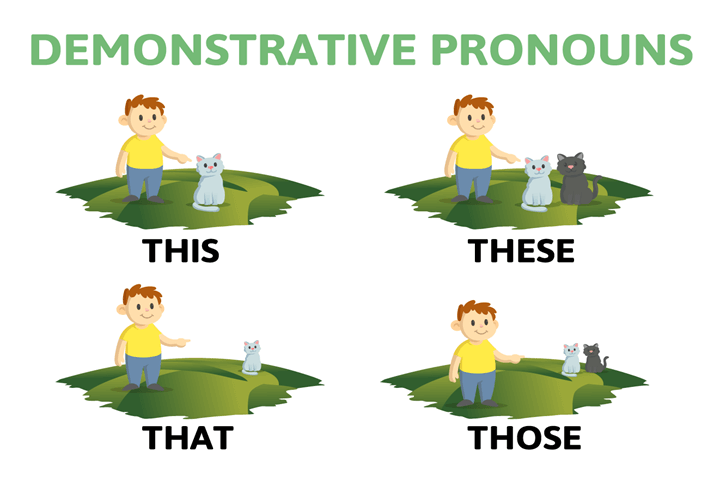The ability to point things out is fundamental in any language. In Arabic, this task relies on Demonstrative pronouns (asmā’ al-ishārah – أسماء الإشارة), which change based on the object’s gender, number, and distance. Therefore, mastering these will give you a major boost in fluency! This comprehensive guide will show you how to say this in arabic, that in arabic, and Those for any situation, in both Modern Standard Arabic (MSA) and common dialects.
Demonstrative Pronouns: Saying This in Arabic (Near)
The words for this in arabic refer to objects close to the speaker. Crucially, they must agree with the noun’s gender and number.
Singular (This)
| Gender | Arabic Pronoun | Transliteration | Example Sentence |
|---|---|---|---|
| Masculine | هَـٰذَا | hādhā | هَـٰذَا كِتَابٌ. (Hādhā kitābun. – This is a book.) |
| Feminine | هَـٰذِهِ | hādhihi | هَـٰذِهِ سَيَّارَةٌ. (Hādhihi sayyāratun. – This is a car.) |
| هَـٰذِهِ مَدْرَسَةٌ. (Hādhihi madrasatun. – This is a school.) |
Dual (These Two)
Furthermore, Arabic distinguishes between two objects using the dual form.
| Gender | Arabic Pronoun | Transliteration | Example Sentence |
|---|---|---|---|
| Masculine | هَذَانِ | hādhāni | هَذَانِ طَالِبَانِ. (Hādhāni ṭālibāni. – These two students.) |
| هَذَانِ كِتَابَانِ مُفِيدَانِ. (Hādhāni kitābāni mufīdāni. – These two books are useful.) | |||
| Feminine | هَاتَانِ | hātāni | هَاتَانِ سَيَّارَتَانِ. (Hātāni sayyāratāni. – These two cars.) |
| هَاتَانِ بِنْتَانِ لَطِيفَتَانِ. (Hātāni bintāni laṭīfatāni. – These two girls are kind.) |
Plural (These)
| Number | Arabic Pronoun | Transliteration | Usage |
|---|---|---|---|
| Plural (Humans) | هَـٰؤُلَاءِ | hāʼulāʼi | Used for human plurals (3+ people), both male and female. |
| Example: هَـٰؤُلَاءِ الطُّلّابُ. (Hāʼulāʼi aṭ-ṭullāb. – These students.) | |||
| Plural (Non-humans) | هَـٰذِهِ | hādhihi | Use the Feminine Singular for all non-human plural nouns (e.g., houses, books). |
| Example: هَـٰذِهِ الكُتُبُ. (Hādhihi al-kutub. – These books.) |
Saying That in Arabic and Those (Far)
In addition to near objects, to point out things far away (that in arabic and Those), you use a different set of Demonstrative pronouns.
Singular (That)
| Gender | Arabic Pronoun | Transliteration | Example Sentence |
|---|---|---|---|
| Masculine | ذَٰلِكَ | dhālika | ذَٰلِكَ مَطْعَمٌ. (Dhālika maṭ’amun. – That is a restaurant.) |
| ذَٰلِكَ كَلْبٌ. (Dhālika kalbun. – That is a dog.) | |||
| Feminine | تِلْكَ | tilka | تِلْكَ حَقِيبَةٌ. (Tilka ḥaqībatun. – That is a bag.) |
| تِلْكَ طَبِيبَةٌ. (Tilka ṭabībatun. – That is a female physician.) |
Plural (Those)
| Number | Arabic Pronoun | Transliteration | Usage |
|---|---|---|---|
| Plural (Humans) | أُولَـٰئِكَ | ūlāʼika | Used for human plurals (3+ people), both male and female. |
| Example: أُولَـٰئِكَ المُهَنْدِسُونَ. (Ūlāʼika al-muhandisūn. – Those engineers.) | |||
| Plural (Non-humans) | تِلْكَ | tilka | Use the Feminine Singular (That) for all non-human plural nouns (e.g., stars, tables). |
| Example: تِلْكَ البُيُوتُ. (Tilka al-buyūt. – Those houses.) |
This in Arabic Dialects vs. That in Arabic Dialects
However, while MSA is essential for formal writing, colloquial Demonstrative pronouns are much simpler and easier to use in everyday conversation. Dialects typically drop the complex dual forms and often ignore the distinction between near and far.
Egyptian Arabic (Masri)
| Meaning | Masculine | Feminine | Plural (Human/Non-Human) |
|---|---|---|---|
| This | ده (da) | دي (di) | دول (dōl) |
| That | ده (da) | دي (di) | دول (dōl) |
| Example (Near/Far) | الكِتَاب ده (el-kitāb da) – This/That book | القُطَّة دي (el-‘oṭṭa di) – This/That cat | الأوْلَاد دول (el-awlād dōl) – These/Those boys |
To clarify, Egyptian Arabic uses the same form (da/di/dōl) for both This in Arabic Dialects and That in Arabic Dialects. Context usually clarifies the distance.
Levantine Arabic (Shami)
| Meaning | |||
|---|---|---|---|
| This (Near) | هَادَا (hāda) / هَيْدَا (hayda) | هَادِي (hādī) / هَيْدِي (haydi) | هَدُول (hadōl) |
| That (Far) | هَدَاك (hadāk) / هَيَّاك (hayyāk) | هَدِيك (hadīk) / هِيَّاك (hiyyāk) | هَدُولَاك (hadōlāk) |
| Example (Far) | هَدَاك البَيْت (hadāk el-bēt) – That house | هَدِيك المَدِينَة (hadīk el-madīne) – That city | هَدُولَاك النَّاس (hadōlāk en-nās) – Those people |
Gulf Arabic (Khaliji)
In contrast to Egyptian, Gulf dialects often retain a clearer distinction between near and far pronouns.
| Meaning | Masculine | Feminine | Plural (Human/Non-Human) |
|---|---|---|---|
| This | هَذَا (hādhā) | هَذِي (hādhī) | هَذُول (hādhūl) |
| That | ذَاك (dhāk) | ذِيك (dhīk) | ذُولَاك (dhūlāk) |
| Example (Far) | ذَاك الرَّجُل (dhāk er-rajul) – That man | ذِيك الشَّنْطَة (dhīk ish-shanṭah) – That bag | ذُولَاك الطَّلَبَة (dhūlāk eṭ-ṭalaba) – Those students |
Quick Tip: The addition of the suffix ـاك (-āk), as seen in هَدَاك or ذُولَاك, is a common dialectal way to clearly mark the “far” distance for That in Arabic Dialects.
Conclusion
Mastering the Demonstrative pronouns for this in arabic and that in arabic is a major achievement in your language studies. These little words are crucial for daily conversation, whether you are using the precise rules of MSA or the simpler forms found in That in Arabic Dialects. Practice using the correct gender and number, and you’ll start speaking Arabic with confidence. To reinforce these tricky grammar points and get immediate feedback on sentence construction, consider using a dedicated Kaleela app. Keep pointing, keep practicing, and keep learning!



